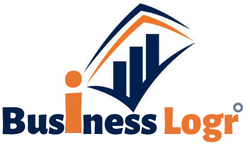
Introduction
When it comes to purchasing a home, one of the biggest hurdles for many buyers is the down payment. While there are various types of mortgage loans available, conventional loans remain a popular choice. However, understanding the down payment requirements for conventional loans can be confusing for some. In this comprehensive guide, we will break down the conventional loan down payment requirements, providing you with the information you need to navigate the home buying process confidently.
What is a Conventional Loan?
Before delving into the down payment requirements, let’s first understand what a conventional loan is. A conventional loan is a type of mortgage that is not insured or guaranteed by the government, unlike loans offered by the Federal Housing Administration (FHA) or the Department of Veterans Affairs (VA). Conventional loans are typically offered by private lenders, such as banks or credit unions.
Down Payment Basics
The down payment is the upfront cash payment a buyer makes toward the purchase price of a home. It represents a percentage of the total home value and is an essential component of obtaining a mortgage loan. The down payment reduces the lender’s risk and serves as an indication of the buyer’s financial responsibility.
Minimum Down Payment Requirement
One of the main advantages of conventional loans is their flexibility in down payment requirements. While government-backed loans often have fixed minimum down payment percentages, conventional loans offer more options. The minimum down payment requirement for a conventional loan typically ranges from 3% to 20% of the home’s purchase price.
Factors Affecting the Down Payment Requirement
Several factors can influence the specific down payment requirement for a conventional loan. These factors include:
a. Credit Score: A higher credit score can often lead to a lower down payment requirement. Borrowers with excellent credit scores may be eligible for lower down payments.
b. Loan-to-Value (LTV) Ratio: The LTV ratio is the percentage of the home’s value that the loan represents. A lower LTV ratio typically results in a lower down payment requirement. For example, a borrower seeking a loan with an 80% LTV ratio would need a 20% down payment.
c. Private Mortgage Insurance (PMI): If the down payment is less than 20% of the home’s purchase price, lenders generally require borrowers to obtain PMI. PMI is an insurance policy that protects the lender in case the borrower defaults on the loan. The cost of PMI is influenced by factors such as credit score and down payment amount.
Options for Low Down Payments
For buyers who are unable to make a substantial down payment, there are options available to help facilitate homeownership. Some common options include:
a. 3% Down Payment: Some lenders offer conventional loans with a minimum down payment requirement of just 3% of the purchase price. This option can be particularly attractive for first-time homebuyers or those with limited funds.
b. Down Payment Assistance Programs: There are various down payment assistance programs offered by state and local governments, nonprofits, and other organizations. These programs provide grants or loans to eligible homebuyers, reducing the upfront cash requirement.
c. Gifts and Loans from Family: Buyers may receive a monetary gift from family members to be used toward the down payment. Additionally, some lenders allow borrowers to use personal loans to supplement their down payment funds.
Benefits of a Higher Down Payment
While low down payment options can be advantageous for some buyers, there are also benefits to making a higher down payment. These benefits include:
a. Lower Monthly Mortgage Payments: A larger down payment reduces the loan amount, resulting in lower monthly mortgage payments.
b. Avoiding Private Mortgage Insurance (PMI): As mentioned earlier, a down payment of 20% or more generally eliminates the need for PMI. This can save borrowers a significant amount of money over the life of the loan.
c. Improved Loan Terms: Lenders may offer more favorable interest rates and loan terms to borrowers who make larger down payments.
Conclusion
Understanding the down payment requirements for conventional loans is crucial for anyone considering buying a home. By knowing the minimum requirements, factors influencing down payment amounts, and available options for low down payments, prospective homebuyers can make informed decisions. Whether you opt for a low down payment or aim to make a larger upfront investment, it’s essential to consider your financial situation and long-term goals. With this comprehensive guide, you’re now better equipped to navigate the conventional loan down payment requirements and embark on your homeownership journey.




